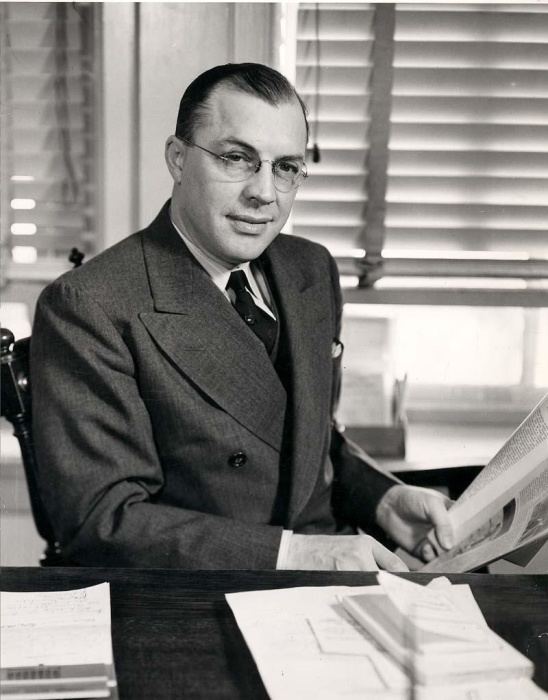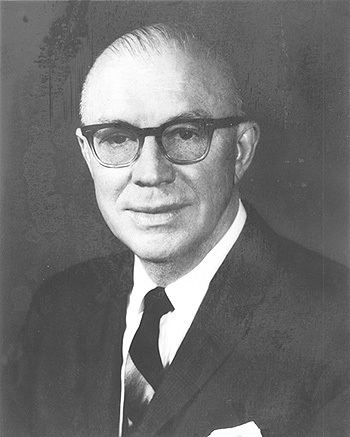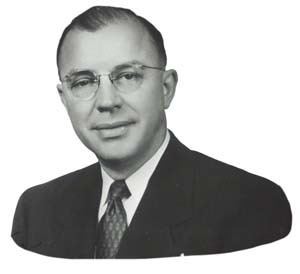Movies Japanese Relocation Name Milton Eisenhower | Nationality American Preceded by Position Created | |
 | ||
Full Name Milton Stover Eisenhower Died May 2, 1985, Balti, Maryland, United States Spouse Helen Elsie Eakin (m. 1927–1954) Siblings Dwight D. Eisenhower, Earl D. Eisenhower, Edgar N. Eisenhower Books The President is Calling Similar People Dwight D Eisenhower, Earl D Eisenhower, Ida Stover Eisenhower, John Eisenhower, Mamie Eisenhower | ||
Milton s eisenhower symposium 2009 transition between generations in a changing america
Milton Stover Eisenhower (September 15, 1899 – May 2, 1985) was an American educational administrator. He served as president of three major American universities: Kansas State University, the Pennsylvania State University, and the Johns Hopkins University. He was the younger brother of U.S. President Dwight D. Eisenhower.
Contents
- Milton s eisenhower symposium 2009 transition between generations in a changing america
- The Honorable Cory A Booker 2011 Milton S Eisenhower Symposium
- Biography
- Personal life
- Legacy
- References

The Honorable Cory A. Booker - 2011 Milton S. Eisenhower Symposium
Biography

He was born in Abilene, Kansas to Ida Elizabeth Stover (1862–1946) and David Jacob Eisenhower (1863–1942); the family was poor. Eisenhower attended public schools and graduated from Kansas State University in 1923 with a Bachelor of Science degree in industrial journalism. Eisenhower served as Director of Information for the U.S. Department of Agriculture from 1928 to 1941, where he was a spokesman for the New Deal. He also was a key member of the Department of Agriculture's Employee Organization: Organization of Professional Employees of the United States Department of Agriculture (OPEDA).
Early in 1942, he was appointed director of the War Relocation Authority, the U.S. government agency responsible for the relocation and internment of Japanese Americans during World War II. Eisenhower was opposed to the mass incarceration, and at initial meetings with pro-exclusion officials he suggested allowing women and children to remain on the West Coast. (The proposal was rejected.) In his position as WRA director, he attempted to mitigate the consequences of the "evacuation," establishing a Japanese American advisory council with Mike Masaoka, a work program that allowed some Japanese Americans to leave camp for employment on labor-starved farms, and a student leave program that allowed Nisei who had been enrolled in college to continue their education. He also tried to get the Federal Reserve Bank to protect the property Japanese Americans were forced to leave behind, and to convince governors of states outside the exclusion zone to allow Japanese Americans to resettle there, but these efforts were largely unsuccessful. Eisenhower resigned after only ninety days, and from June 1942 to mid-1943 he was associate director of the Office of War Information.
In May 1943, Eisenhower became President of Kansas State University (his alma mater), a position he held until 1950. During this time, he also served as the first Chairman of the U.S. National Commission for UNESCO. In this role, Eisenhower sought to also establish UNESCO commissions for each state. He personally organized the first such commission, in Kansas.
Eisenhower was often referred to as "Doctor." However, he did not hold an earned doctoral degree; instead, he had received an honorary doctorate of humane letters (D.H.L.) from the University of Nebraska in 1949. After leaving Kansas State University in 1950, Eisenhower served as President at two other universities:
In July 1956, Milton Eisenhower assumed the presidency of Johns Hopkins University, succeeding Lowell J. Reed. During Eisenhower's first term, University income tripled and the endowment doubled. More than $76 million in new buildings were constructed, including the Milton S. Eisenhower Library, completed in 1964 and named for Eisenhower in 1965. Respected and admired by faculty and students alike, Eisenhower was arguably the most popular Hopkins president since Daniel Coit Gilman. He kept office hours when any student could drop in, and he was welcome at students’ off-campus parties.
When Eisenhower retired in 1967, he was given the title President Emeritus in recognition of his service. In March 1971, after Lincoln Gordon's abrupt resignation, the trustees asked Eisenhower to return until a permanent successor could be found. He reluctantly agreed to return, making it clear that the search for a permanent successor must begin immediately. His second administration, lasting ten months, required him to reduce a large deficit and slow the growth of the University's administration. His reputation for fairness helped greatly in that turbulent time, and, despite the budgetary problems, he was able to push forward with planning and design for a new student center. In January 1972, he was succeeded as president by Steven Muller, who (although hired by Lincoln Gordon) had served a ten-month “apprenticeship” under Eisenhower as Vice President and Provost. Eisenhower enjoyed a second active retirement until his death on May 2, 1985.
He served as a presidential adviser in the administrations of his brother Dwight D. Eisenhower (1953-1961), John F. Kennedy (1961-1963) and Lyndon B. Johnson (1963-1969). In 1968, he was appointed Chairman of the National Commission on the Causes and Prevention of Violence by President Johnson.
In 1980, Eisenhower appeared on the ballot in Texas as the running mate of Congressman John B. Anderson, Independent candidate for President of the United States.
Personal life
On October 12, 1927, Eisenhower married Helen Elsie Eakin (1904–1954), with whom he had a son, Milton Stover Eisenhower, Jr., in 1930 and a daughter, Ruth Eakin Eisenhower, in 1938.
Eisenhower died of cancer in Baltimore, Maryland on May 2, 1985.
Legacy
The Milton S. Eisenhower Symposium is an acclaimed, student-organized lecture series founded in 1967 at Johns Hopkins University. All events take place on the Homewood campus in Shriver Hall and are free and open to the public.
